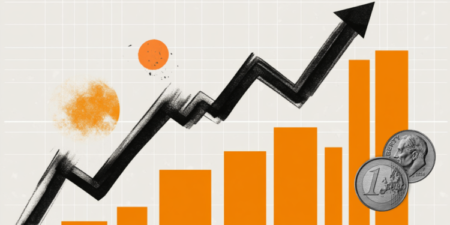- The Pound Sterling attracts some bids after the release of a hotter-than-expected UK inflation report for January.
- BoE’s Bailey expects the uptick in inflation won’t be persistent in nature.
- US President Trump threatens to impose 25% tariffs on automobiles, semiconductors, and pharmaceuticals.
The Pound Sterling ticks higher against its major peers after the release of the United Kingdom (UK) Consumer Price Index (CPI) data for January, which showed that inflationary pressures accelerated at a faster-than-expected pace. In the year, the headline CPI rose by 3%, faster than estimates of 2.8% and the December reading of 2.5%. In the same period, the core CPI – which excludes volatile components of food, energy, alcohol, and tobacco – grew by 3.7%, as expected, faster than the former reading of 3.2%.
Month-on-month headline CPI inflation deflated at a slower-than-projected pace of 0.1%, compared to the 0.3% growth in December. Economists expected headline inflation to deflate at that pace this month.
Inflation in the services sector, which is closely tracked by Bank of England (BoE) officials, accelerated to 5% from 4.4% in December.
The impact of high inflation data is unlikely to be secularly positive for the British currency. BoE officials have already communicated in their latest monetary policy statement that price pressures could tick higher in the short term due to rising energy prices before returning to their 2% path.
On Monday, BoE Governor Andrew Bailey also said in an interview with BusinessLine that the impact of an expected increase in inflation won’t be “persistent,” and still sees the “gradual disinflation going on”. Bailey added that a “sluggish state” of the economy is also likely to “act against inflation”, Reuters reported.
However, an increase in inflationary pressures is expected to restrict the BoE from further monetary easing.
Going forward, investors will focus on the UK Retail Sales data for January and the preliminary S&P Global/CIPS Purchasing Managers Index (PMI) data for February, which will be released on Friday.
British Pound PRICE Today
The table below shows the percentage change of British Pound (GBP) against listed major currencies today. British Pound was the strongest against the Swiss Franc.
| USD | EUR | GBP | JPY | CAD | AUD | NZD | CHF | |
|---|---|---|---|---|---|---|---|---|
| USD | 0.07% | -0.08% | -0.23% | 0.03% | -0.13% | -0.45% | 0.16% | |
| EUR | -0.07% | -0.15% | -0.29% | -0.04% | -0.20% | -0.50% | 0.09% | |
| GBP | 0.08% | 0.15% | -0.15% | 0.12% | -0.05% | -0.35% | 0.24% | |
| JPY | 0.23% | 0.29% | 0.15% | 0.24% | 0.07% | -0.25% | 0.36% | |
| CAD | -0.03% | 0.04% | -0.12% | -0.24% | -0.17% | -0.47% | 0.12% | |
| AUD | 0.13% | 0.20% | 0.05% | -0.07% | 0.17% | -0.30% | 0.29% | |
| NZD | 0.45% | 0.50% | 0.35% | 0.25% | 0.47% | 0.30% | 0.60% | |
| CHF | -0.16% | -0.09% | -0.24% | -0.36% | -0.12% | -0.29% | -0.60% |
The heat map shows percentage changes of major currencies against each other. The base currency is picked from the left column, while the quote currency is picked from the top row. For example, if you pick the British Pound from the left column and move along the horizontal line to the US Dollar, the percentage change displayed in the box will represent GBP (base)/USD (quote).
Daily digest market movers: Pound Sterling edges higher against USD, FOMC minutes in focus
- The Pound Sterling moves higher to near 1.2630 against the US Dollar (USD) in Wednesday’s European session. The GBP/USD pair rise as the US Dollar trades subduedly, with the US Dollar Index (DXY) wobbling around 107.00, ahead of the release of the Federal Open Market Committee (FOMC) minutes for the January meeting, which will be published at 19:00 GMT.
- Investors will focus on FOMC minutes for the January decision to get cues about how long the Federal Reserve (Fed) will keep interest rates steady in the range of 4.25%-4.50%. In the January meeting, the Fed announced a pause in its monetary expansion cycle after cutting interest rates by 100 basis points (bps) in the last three meetings of 2024. Fed Chair Jerome Powell guided that monetary policy adjustments would become appropriate when officials see “real progress in inflation or at least some weakness in the labor market”.
- On Tuesday, San Francisco Fed Bank President Mary Daly also favored a “restrictive” monetary policy stance until she sees a continuation in progress in the disinflation trend.
- Meanwhile, renewed fears of tariffs by United States (US) President Donald Trump could strengthen the US Dollar. President Trump said on Tuesday that he plans to impose 25% tariffs on imports of automobiles, semiconductors, and pharmaceuticals, which could increase further over the next year. This could lead to a slowdown in the global economy.
Technical Analysis: Pound Sterling holds key support of 1.2600
The Pound Sterling trades above the key level of 1.2600 against the US Dollar in European trading hours on Wednesday. The GBP/USD pair gathers strength to break above the 38.2% Fibonacci retracement, which coincides with the 100-day Exponential Moving Average (EMA), around 1.2620.
The 14-day Relative Strength Index (RSI) advances above 60.00. A bullish momentum would activate if the RSI (14) sustains above that level.
Looking down, the February 3 low of 1.2250 will act as a key support zone for the pair. On the upside, the 50% Fibonacci retracement at 1.2767 will act as a key resistance zone.
Read the full article here
















